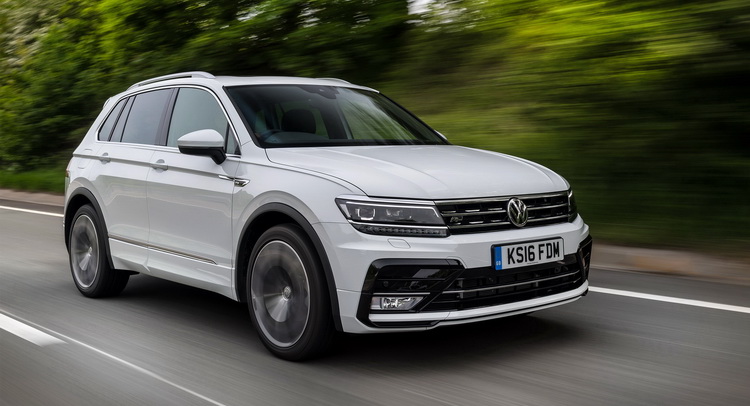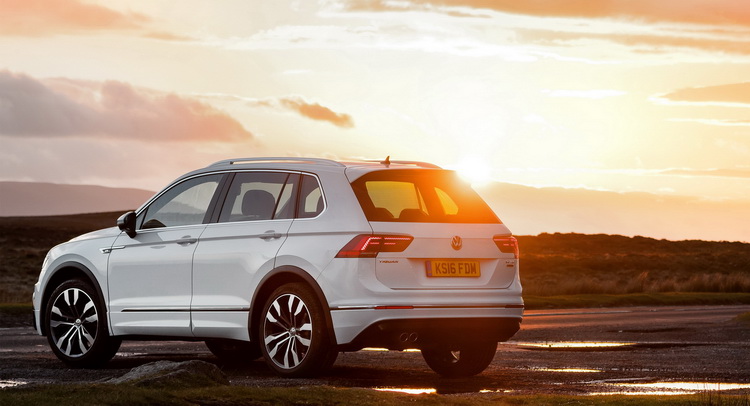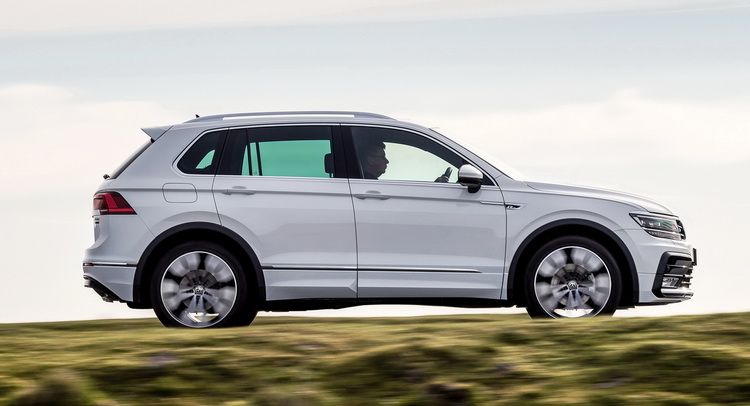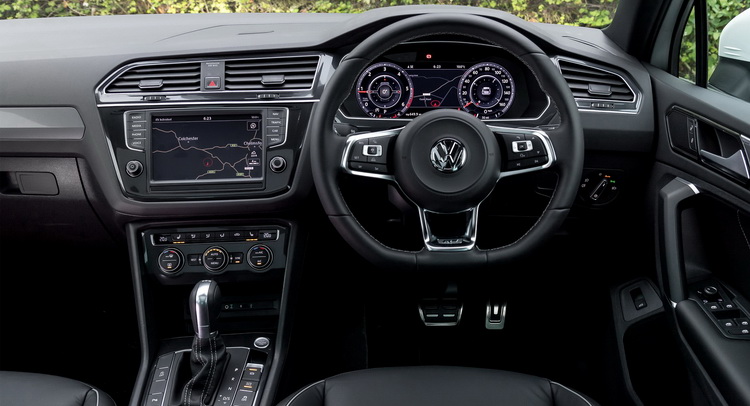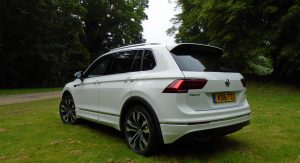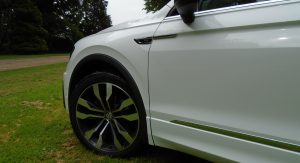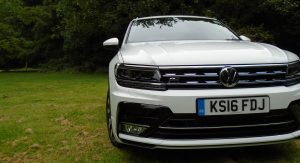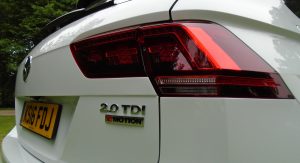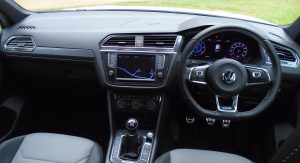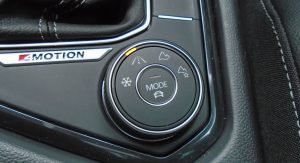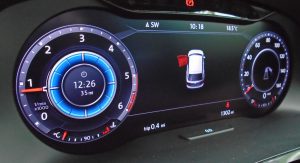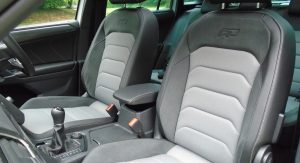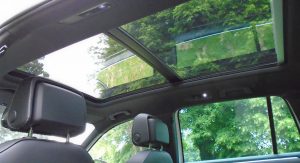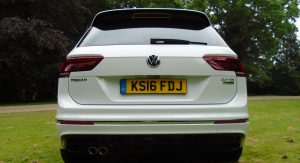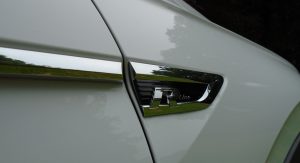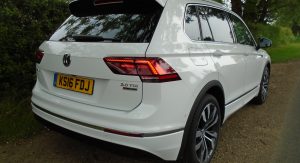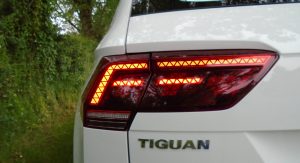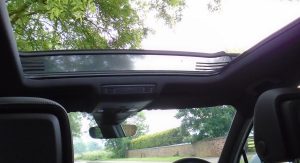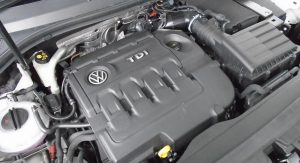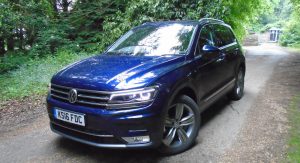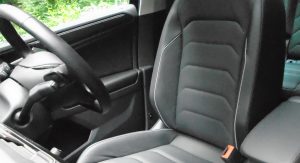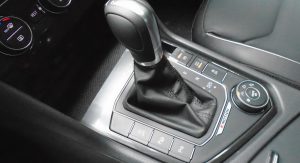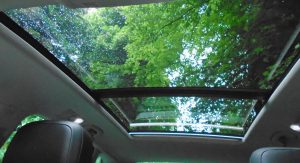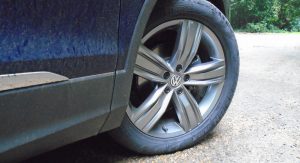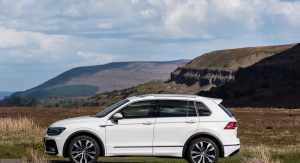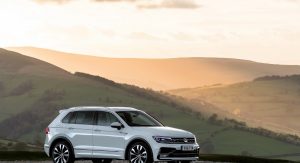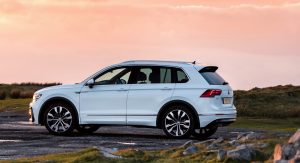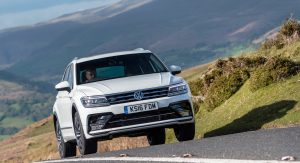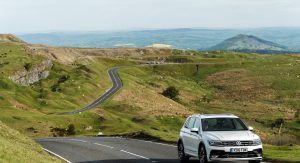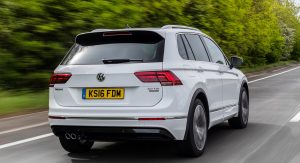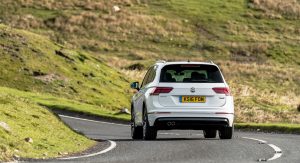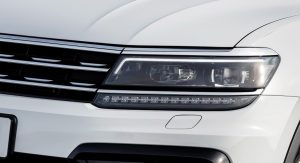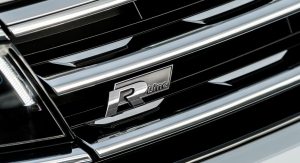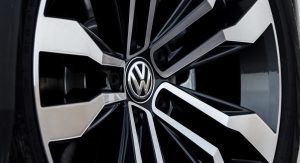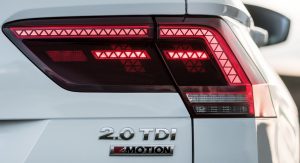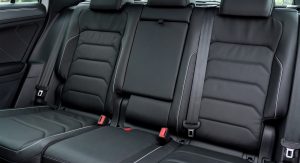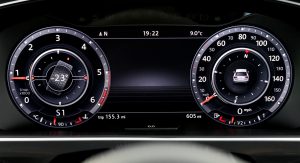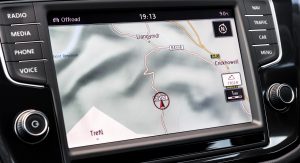The second-generation Tiguan arrives at a difficult period for VW, but this doesn’t take anything away from its impressive and complete character.
We had the chance of spending some time behind the wheel of the 148hp 2.0-litre TDI 4Motion version in the UK, both in R-Line and SEL trim levels, which is expected to be the best-seller of the range.
4Motion-equipped models offer a 200mm ground clearance, 2000kg (4,409 lbs) towing ability (DSG models: 2200-2500kg | 4,850-5,511 lbs) and four different modes selected by a rotary knob in the center console: Snow, Onroad, Offroad and Offroad Individual which lets you configure your personal preferences.
Up Close
In person, the new VW Tiguan manages to look attractive and modern without provoking any unnecessary attention. It’s a recipe VW knows well, with very well-played proportions that give the Tiguan a more dynamic stance which simply wasn’t there in the original model. Blame the 33mm reduction in height which combined with the 30mm increase in width and 77mm increase in wheelbase, gives the new VW Tiguan more road presence.
If that last bit is your thing, you will love the R-Line model. The pack includes a sports suspension, 20in ‘Suzuka’ wheels shod in 255/40 tires, more aggressive front and rear bumpers, side skirts, rear roof spoiler, black fender extensions and a rear diffuser. For a car that can do 0-62mph (0-100km/h) in 9.3 seconds and top out at 125mph (201km/h) it almost looks too aggressive but people seem to love the extra flare and who are we to judge.
On The Road
It doesn’t take long to get a feeling of confidence behind the wheel of the Tiguan; everything looks and feels properly sorted, from the soundproofing to the ride quality and from the body control to the steering. Our R-Line test car was fitted with the six-speed manual gearbox which also surprised us with its short throw.
It’s not ‘sporty’ in the traditional sense though, as the steering lacks in feedback and becomes unnecessary heavy in its Sport setting. Just leave it to its normal mode, where it strikes a nice balance in weight and directness. Also when the surface changes to bumpy b-road mode, the massive wheels put VW’s suspension work to the test, transmitting vibrations inside but without unsettling the balance of the car. Body control is tight -even in these conditions- and the confidence inspired remains at high levels. A set of smaller wheels is definitely though the better option.
The engine is quiet and provides enough oomph to keep things interesting, offering its maximum 251lb ft (340Nm) of torque between 1,750 and 3,000rpm. There really is no point of pushing it further than 4,000rpm but even then it remains smooth for the kind of fuel it uses. The DSG-equipped car we also drove provided snappy gear changes and proved to be -as ever- quick thinking when switching the pace from fast to normal driving. It even offers a coasting function when the Eco mode is selected.
Dat Cabin Tho
It’s true; the materials and tech used inside the new Tiguan blur the borders between traditional premium rivals and affordable models with big sales numbers in mind. Soft-touch plastics cover most of the dashboard and the front doors, with the fit and finish to be really impressive.
Add to that VW’s 12.3-inch configurable Active Info Display in front of the driver -a segment first- and one of the best infotainment systems on the market and you suddenly realize that there isn’t much there to complain about.
Plus it offers one of the most spacious cabins too; the rear bench can fit up to three adults with plenty of knee and head room while luggage space is rated at 615lt with the sliding rear seats in their upright position, 145lt more than its predecessor.
Active safety features include the Front Assist automated city braking system, lane assist and an active cruise control with traffic jam assist when equipped with a DSG transmission.
Conclusion
More than 2.8 million units of the original Tiguan were sold and we can’t really see why the Mk2 model will not continue the success story. The company wants the new Tiguan to not only rival cars of a lower price-point such as the Nissan Qashqai and the Hyundai Tucson, but also give more expensive premium rivals like the BMW X1 and the Mercedes GLA a good bruising.
Just take a look at the pricing of it: the new Tiguan starts from £22,510 as a 2WD 1.4TSI and stretches all the way up to £36,375 for the 187hp 2.0 TDI 4Motion R-Line DSG model, covering a very wide range of budgets. The 148hp 2.0TDI models kick-off at £25,560.
So yes, the new VW Tiguan might be a bit pricey when considered against non-premium rivals but also can look like a bargain if you’re looking into more expensive SUVs of the same size. Either way, you won’t find many faults in choosing one.
Photos Michael Karkafiris / Carscoops.com – Volkswagen UK
Correction: A previous version of this article said that the Tiguan could nab some sales from base versions of the BMW X3 and Mercedes-Benz GLC instead of the X1 and GLA respectively.




